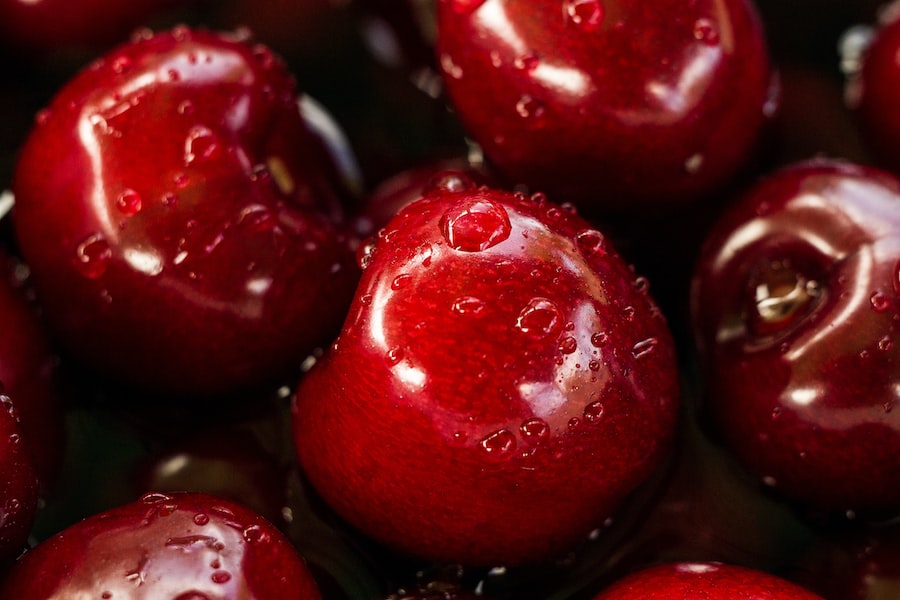Growing Dragon Fruit Made Easy: A Step-by-Step Guide to Propagating Dragon Fruit from Cuttings

Dragon fruit, also known as pitaya, is a tropical fruit that has gained popularity in recent years due to its unique appearance and health benefits. It is native to Central America but is now grown in many parts of the world, including Asia, Australia, and the United States. Dragon fruit is known for its vibrant colors and sweet, refreshing taste. It is rich in antioxidants, vitamins, and minerals, making it a nutritious addition to any diet.
Growing dragon fruit at home has become a popular hobby for many gardening enthusiasts. Not only does it provide a beautiful addition to your garden, but it also allows you to enjoy the fruits of your labor. By growing dragon fruit at home, you have control over the growing conditions and can ensure that the fruit is free from pesticides and other chemicals.
Key Takeaways
- Dragon fruit is a tropical fruit that is easy to grow and propagate.
- Propagation can be done through cuttings, which should be selected carefully.
- The soil should be well-draining and rich in nutrients for optimal growth.
- Watering and fertilizing should be done regularly to support growth.
- Pests and diseases can be managed through proper care and maintenance.
Understanding Dragon Fruit Propagation
Dragon fruit can be propagated through various methods, including seeds, cuttings, and tissue culture. Each method has its benefits and drawbacks.
Seeds: Propagating dragon fruit from seeds is the most natural method but also the most time-consuming. It can take several years for the plant to reach maturity and produce fruit. Additionally, there is no guarantee that the fruit produced from seeds will be similar to the parent plant.
Cuttings: Propagating dragon fruit from cuttings is a popular method among home gardeners. It involves taking a section of a mature plant and planting it in soil or water until it develops roots. This method allows for faster growth and ensures that the new plant will be similar to the parent plant.
Tissue Culture: Tissue culture is a more advanced method of propagation that involves growing plants in a laboratory setting. It allows for mass production of plants with consistent characteristics. However, this method requires specialized equipment and knowledge.
Selecting the Right Dragon Fruit Cuttings
When selecting dragon fruit cuttings for propagation, it is important to choose healthy and disease-free plants. Look for cuttings that have firm, green stems and no signs of rot or damage. The cuttings should also have at least three nodes, which are the points where the roots will develop.
It is also helpful to select cuttings from plants that have already produced fruit. This ensures that the plant is mature enough to produce fruit and increases the chances of a successful propagation.
Preparing the Soil for Dragon Fruit
| Soil Preparation Metric | Value |
|---|---|
| Soil pH | 5.5-6.5 |
| Organic Matter Content | 3-5% |
| Nitrogen Content | 0.5-1.5% |
| Phosphorus Content | 0.2-0.5% |
| Potassium Content | 0.5-1.5% |
| Soil Texture | Sandy loam |
Dragon fruit thrives in well-draining soil with a pH level between 6 and 7.5. It prefers sandy or loamy soil that is rich in organic matter. Before planting dragon fruit, it is important to prepare the soil to create optimal growing conditions.
Start by removing any weeds or grass from the planting area. Dig a hole that is at least 1 foot deep and 1 foot wide. Mix in compost or well-rotted manure to improve the soil’s fertility and drainage. Avoid using chemical fertilizers or pesticides, as they can harm the plant and affect the taste of the fruit.
Planting Dragon Fruit Cuttings
The best time to plant dragon fruit cuttings is during the warm months of spring or summer when the soil temperature is above 60°F (15°C). This allows the roots to establish before winter arrives.
To plant dragon fruit cuttings, place them in the prepared hole with the bottom node buried in the soil. Gently backfill the hole, ensuring that the cutting is secure and upright. Water the plant thoroughly after planting to help settle the soil and provide moisture for root development.
Watering and Fertilizing Dragon Fruit

Dragon fruit requires regular watering to thrive, especially during dry periods. However, it is important not to overwater as this can lead to root rot. The frequency of watering will depend on factors such as temperature, humidity, and soil type.
During the growing season, water the plant deeply once a week. Allow the soil to dry out slightly between waterings to prevent waterlogged conditions. In winter, reduce watering to once every two weeks.
Dragon fruit benefits from regular fertilization to promote healthy growth and fruit production. Use a balanced fertilizer with equal amounts of nitrogen, phosphorus, and potassium. Apply the fertilizer every two to three months during the growing season, following the manufacturer’s instructions.
Supporting Dragon Fruit Growth
Dragon fruit is a climbing cactus that requires support as it grows. Without proper support, the plant’s branches can become tangled and break under the weight of the fruit.
There are several types of support structures that can be used for dragon fruit, including trellises, stakes, and fences. Choose a structure that is sturdy enough to support the weight of the plant and allows for easy access to the fruit.
To install the support structure, place it near the plant and gently tie the branches to it using soft ties or twine. Avoid using wire or string that can cut into the plant’s stems.
Managing Pests and Diseases in Dragon Fruit
Like any plant, dragon fruit is susceptible to pests and diseases. Common pests that affect dragon fruit include aphids, mealybugs, and scale insects. These pests can be controlled by regularly inspecting the plant for signs of infestation and using organic insecticides or insecticidal soaps.
Dragon fruit is also prone to fungal diseases such as anthracnose and stem rot. To prevent these diseases, avoid overwatering and ensure proper drainage. If signs of disease appear, remove affected parts of the plant and treat with a fungicide.
Harvesting Dragon Fruit
Dragon fruit is ready for harvest when it reaches its full color and gives slightly when pressed gently. The skin should be firm but not too hard. Overripe dragon fruit may become mushy and lose its flavor.
To harvest dragon fruit, use a sharp knife to cut the fruit from the stem. Be careful not to damage the fruit or the plant. After harvesting, dragon fruit can be stored in the refrigerator for up to one week.
Enjoying the Fruits of Your Labor
Growing dragon fruit at home can be a rewarding experience. By following the steps outlined in this article, you can successfully propagate, plant, and care for dragon fruit plants. With patience and proper care, you will soon be enjoying the delicious fruits of your labor. Whether eaten fresh, added to smoothies, or used in desserts, dragon fruit is a versatile and nutritious addition to any diet. So why not give it a try and start growing your own dragon fruit today?



